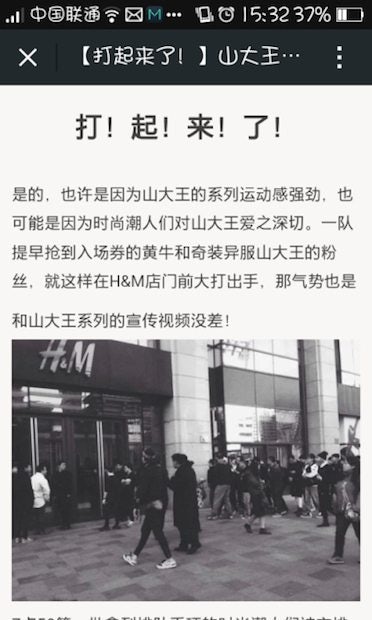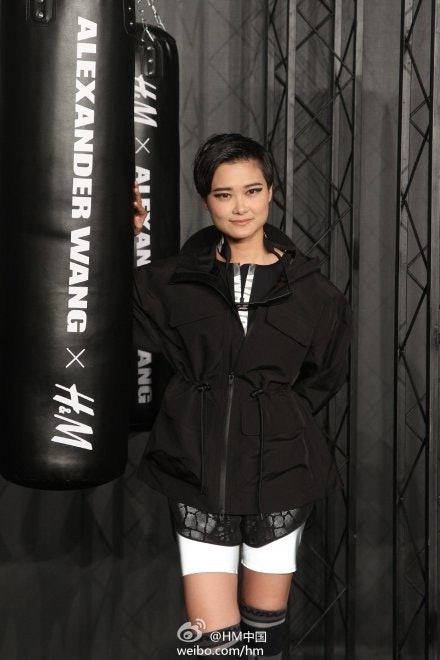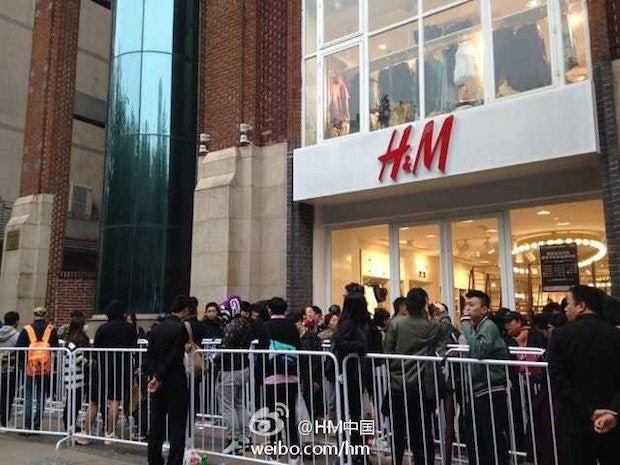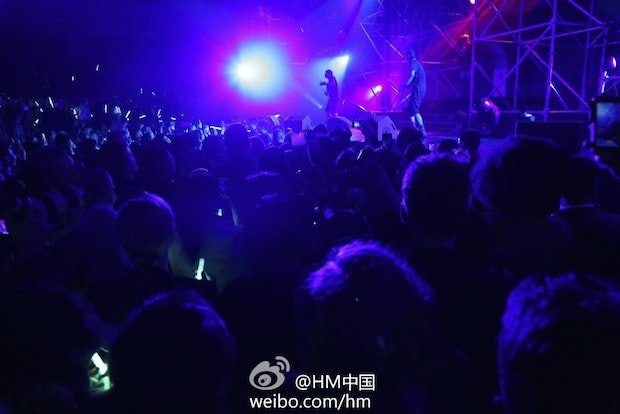
Fashion designer Alexander Wang (L) poses with Chinese actress Fan Bingbing (R) at the Alexander Wang X H&M launch event in Shanghai. (Weibo/H&M)
Eagerly awaited since it was first announced at Coachella in April, a promising collaboration between H&M and Alexander Wang for the 2014 H&M Winter Collection hit the clothing chain’s stores worldwide on November 6—and Chinese fashionistas are a key target for the brand. The 61 master pieces designed by the world-famous fashion designer are being promoted in China through a comprehensive digital marketing strategy based on social media and online press relations.
Firstly, to build up hype for the collaboration, pictures were published before the launch of the the main social media campaign on H&M’s official website. Meanwhile, Alexander Wang posted the early pictures on Instagram in April, before the official announcement of the collaboration. This strategy immediately caught the public’s attention on the internet.
Secondly, H&M enlisted Rihanna as a brand ambassador for its online PR strategy in order to build up conversation about the collection. Known for being a style icon, the pop star receives attention for always being a step ahead in fashion. As an increasing number of people mentioned the collaboration on social media platforms and online magazines when Rihanna was photographed wearing the Alexander Wang X H&M collection, the topic became a craze on the web in China as well—especially on the most important and influential social media platforms WeChat and Weibo, where web users spread and shared the news and pictures along with comments.

A WeChat post promoting the Alexander Wang X H&M collection. (WeChat/H&M)
The brand also went local with its China marketing strategy for the collection with online press relations, which are a very efficient tool for fashion—particularly in China. H&M called upon several Chinese KOLs (key opinion leaders) such as fashion editors, famous fashion bloggers, and superstars including Fan Bingbing and Li Yuchun to promote its Alexander Wang X H&M collection, holding a huge party in Shanghai with Alexander Wang himself in attendance.
By giving more insight into the new collaboration, this increased the discussion around and perception of uniqueness of the co-branding campaign.

Pop star Li Yuchun at the Alexander Wang X H&M launch party. (Weibo/H&M)
When the public sale date of the new collection emerged, people pounced on the items in China stores and online. The official shopping website collapsed, and then, when it was functional again, all the items were already sold out. These logistical difficulties caused some frustrations, and resulted in many negative comments about H&M and its collection on the Chinese web, especially on social media. The brand was accused of unfair practices by a lot of Chinese consumers and the event actually caused some harm to its reputation.

After building up the hype on social media, fans wait outside of an H&M store in China for the unveiling of the new collection. (Weibo/H&M)
This drama underscores the fact that in China, social media plays an important role for a brand’s image and reputation, and even incredibly popular brands should control their reputations on the web and be prepared to act in case of negative comments. Chinese consumers online are highly suspicious about brand image and reputation. That is why calling upon respected KOLs or bloggers (preferably those who aren’t seen as a part of the KOL “red envelope” culture) is very effective in China and can improve the reputation of a brand amongst netizens.
As a fashion brand, holding a major event that’s heavily promoted in the press and on social media can also be an excellent way to reach your target audience, and especially even more efficient if you are a new fashion brand aiming to be known.

A scene from the Alexander Wang X H&M launch party in Shanghai. (Weibo/H&M)
Firstly, fashion events will allow you to deliver a clear message and present a good image. Calling upon a celebrity as a spokesman will help your brand to build up a community of fans very quickly. Even if a brand is new to China, calling on a well-liked celebrity can lead many to spontaneously like the brand. Secondly, holding a fashion event can be a way to assert your brand’s personality if you can choose a theme and topic that will be widely discussed though Chinese online channels.
In general, co-branding between a mass market fashion brand and a high-end fashion designer is very efficient and directly influences the consumers’ purchasing decisions. As you can see with the case of a major name like Alexander Wang, the high-end fashion designer plays the role of KOL in addition to the celebrities.
There is a risk, however, that the popularity of the designer could takes over your brand’s personality—meaning online press relations must be controlled for the success of the strategy.
Olivier Verot is the founder of Gentlemen Marketing Agency, and specializes in digital marketing solutions for the Chinese market. Find more information about the author on Google Plus or LinkedIn.